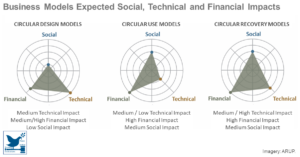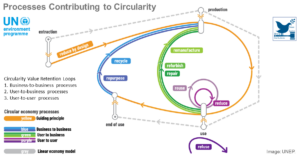
Circular Business Models for the Built Environment
Circular business models (CBMs) create additional value by taking a systemic view across the whole life cycle of assets, using new technologies, and applying advanced design approaches. This added value demonstrates the feasibility of the business case for adopting CBMs, the social, economic and environmental benefits ...
Posted on 12/10/22

Scaling the Circular Built Environment: Pathways for Business and Government
The private and public sectors need to create a level playing field for circular materials, products and services to become the new normal in the built environment. The transition to a circular economy calls for introducing new valuation methods and implementing long-term policies that encourage the scaling of circula ...
Posted on 23/09/22

Applying Principles of Circular Economy to Sustainable Tourism
The circular tourism model must be implemented immediately for us not to exceed the ecological ceiling through the polluting practices of our current linear tourism model and to ensure tourism does not fall short on the social factors. As the tourism has a multiplier effect, it could be a catalyst to move the whole ec ...
Posted on 07/09/22

3 Ways We Can Collaborate Better for a Circular Economy
Collaboration between all stakeholders is essential for a successful circular economy. Where stakeholder collaboration is difficult to achieve and there is little cross-sector collaboration, circular innovations are costly and scarcely adapted. To make meaningful progress in circularity, we must have a collaborative ...
Posted on 22/08/22

Pathway to Net Positive Hospitality
The future of tourism and the hospitality industry increasingly depends on protecting the unique and alluring locations in which hotels are located and operate. The Pathway to Net Positive Hospitality published by the Sustainable Hospitality Alliance offers simple and practical solutions that have a net positive impac ...
Posted on 27/06/22
Publishings2024-10-24T10:35:53+02:00

